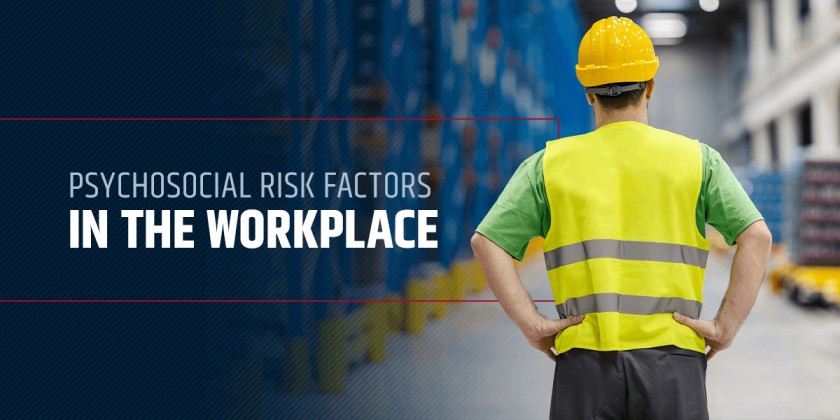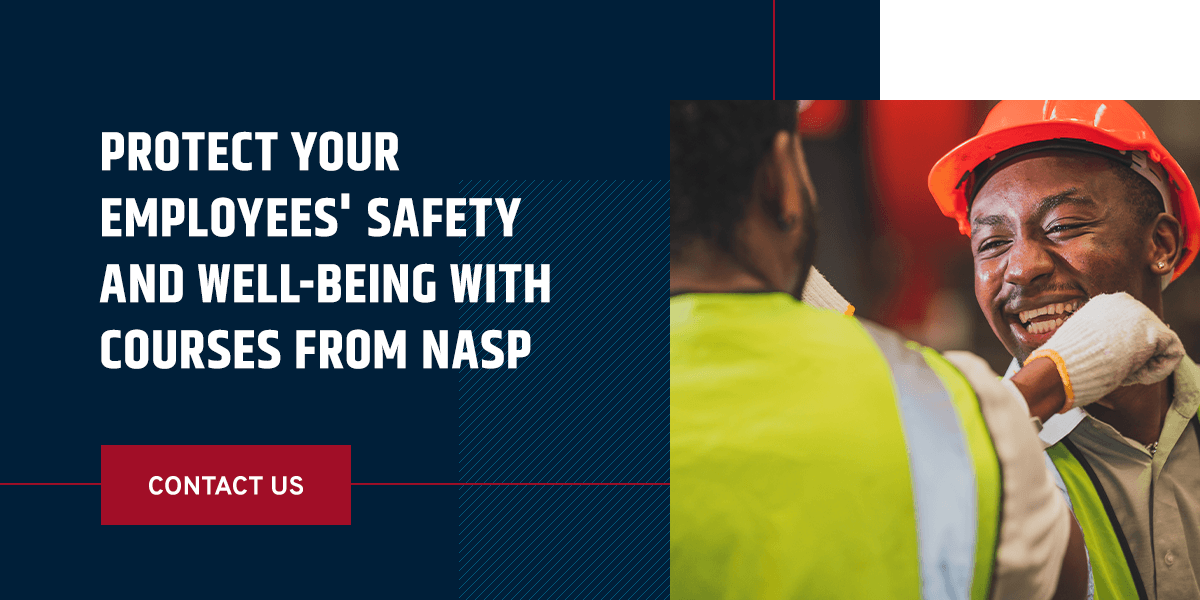Psychosocial Risk Factors in the Workplace

When it comes to your employees, you know that health and safety are the top priority. However, this means more than just maintaining their physical work environment to meet OSHA regulations and safety standards. Psychosocial safety also plays a critical role in your workers’ physical and mental health. Neglecting psychosocial factors can lead to risk for your employees and your company overall, including excessive work-related stress, high turnover, and OSHA violations.
Implementation of protective factors, including education and training, can prevent physical and mental health threats to your employees’ safety, enabling you to remain productive and competitive in the industry. Let’s dive into some psychosocial risk factors in the workplace and how they can impact your organization from the bottom up.
Work-Related Psychosocial Risk Factors
Similar to occupational hazards, which are physical risk factors in the workplace, psychosocial factors include any occupational hazards that can negatively impact the psychological well-being of your employees and their ability to participate in their environment.
Here are some examples of psychosocial risk factors:
- Conflicting job demands
- Frequent organizational change
- Lack of control over shifts, schedules, tasks, and working methods
- Lack of clarity for roles and expectations
- Ineffective or lack of communication
- Job insecurity
- Harassment
- Discrimination
- Workplace violence
- Lack of support from management
- Excessive workloads
- Unreasonable, tight deadlines
- Carrying out repetitive, monotonous tasks
- Working too quickly or without breaks
- Limiting opportunities for social interaction with colleagues
- High levels of effort are not met with sufficient reward
- Limited ability to progress professionally or develop skills
- Limited means to build meaningful interpersonal working relationships
- Lack of work-life balance
- Working in extreme or hazardous conditions with inadequate equipment
This list is relatively short compared to all the psychosocial factors and hazards that may exist in your industry and workplace. Now that you know the risk factors, what causes these psychosocial risks at work? Generally, these vulnerabilities will occur and lead to worse conditions if poor environmental, health, and safety (EHS) practices are in place, in addition to inadequate management and safety professional standards.
This may be because mental health is not often prioritized as highly as physical health, such as in the construction industry. A 2021 report found that while mental health was a concern for the high-risk industry, only 17% of workers felt comfortable discussing the topic with their supervisors.
In an industry where fatal injuries often occur, like construction, many workers also experience higher rates of substance abuse and suicide due to physical injury to themselves or their colleagues. Compared to the national average of 8.6%, research shows that 15% of construction workers deal with substance abuse and 12% struggle with alcohol abuse, while the national average is 7.5%.
How Psychosocial Risk Factors Impact Your Employees
The psychosocial risk factors noted above are just some of the undesirable hazards that may be present in your organization. Exposure to these hazardous work situations can impact many aspects of your employees’ mental and psychological health, making it difficult for them to stay focused and productive at work, leading to copious amounts of stress.
If left untreated, these risk factors may result in significant negative psychological outcomes for your employees, including:
- Stress
- Anxiety
- Depression
- Absenteeism
- Low productivity
- Burnout
- Turnover
- Conflict
- Irritability
- Cardiovascular diseases
- Substance abuse
- Eating disorders
- Inability to achieve stress management
- Social isolation
- Changes in behavior
- Deteriorating relationships with coworkers
- Suicide
The Effects of Psychosocial Risk Factors on Your Business
In addition to the detrimental effects on your employees, psychosocial risk factors can also present just as much harm to your company as a whole. When your workers do not feel safe and supported — particularly if they are working in hazardous physical conditions — you will likely see various issues arise in your company, including:
- A reduction in the quality of work
- Reduced productivity
- Higher absenteeism
- Reputation damage
- Litigation as a result of workers’ claims
- Customer or client complaints
- Decreased employee morale
- Decreased employee engagement
- Frequent conflicts
- Increased frequency of mistakes or accidents
These factors alone can undo the hard work and success your team has aimed for, causing you to lose revenue and even have difficulty hiring new staff members who learn of poor employer reputation. Not to mention, higher absenteeism makes it challenging to complete tasks and projects, putting you behind deadlines and creating stress on your remaining employees.
How to Prevent the Presence of Psychosocial Risk Factors at Your Workplace
As you can see, psychosocial safety in the workplace is critical for the safety, health, and well-being of your employees and the success of your organization. To reduce such negative impacts and consequences to your employees’ mental health, it’s important to learn how to prevent the presence of these risk factors in the first place. Here are a few ways you can tackle psychosocial risk factors within your organization:
- Observe and monitor working conditions: The first step to improving the work environment for your employees is to reflect on how things are currently running. Look at your calendars and schedules to identify where you can cap long shifts and include more breaks for employees. Meet more frequently to collect employee feedback, questions, concerns, and ideas.
- Take action on employee concerns: You can help your employees feel heard, valued, and appreciated for their contributions by implementing changes based on their feedback. Are your employees asking for improved equipment? Are they stressed due to being understaffed? Do they not feel recognized for their hard work? See what you can do to rectify their concerns.
- Create a flexible working environment: Working long hours with no days off can be detrimental to anyone’s mental health. In addition, it also makes it very challenging for employees to rest, recover and spend time with their loved ones. Having a work-life balance is important to your employees, so be sure to adapt hours where you can to cater to their personal needs.
- Promote positive, frequent communication: You can clear up your employees’ lack of clarity about their job roles and expectations by implementing new communication policies. Be sure to meet with each employee monthly, if possible, to discuss their mental health. You can also create a designated email or monthly employee meeting where your workers can share their concerns.
- Provide employees with professional education and training: Employees who feel limited in their careers may seek other positions or simply become disengaged at work. By providing your employees with continuing education units and safety courses, you can boost their professional development and make credential maintenance easier for them.
Protect Your Employees’ Safety and Well-Being With Courses From NASP
Reducing psychosocial factors in the workplace is the first step to creating a positive, safe, and healthy professional environment for all. At the National Association of Safety Professionals, it’s our goal to help safety professionals like you provide workplace safety training for your employees and empower them with interactive and dynamic courses that ensure knowledge retention. Try these courses to improve your psychosocial knowledge:
Human and Organizational Performance (HOP) Certificate Behavior-Based Safety Specialist (BBS)
Our real-world training courses are built by safety professionals for safety professionals, meaning you and everyone in your organization can benefit from our online and live learning courses for a comprehensive education. If you want to invest in the psychosocial well-being of your entire organization, contact us today to learn more about our training and consulting services.
Blog Posts
Latest Posts
Related Posts





